Celebrating The Flower Of Tsuyu: Hydrangeas At Their Peak In Kamakura

Rainy season may mean overcast days, but it also means the hydrangeas are about to bloom. Kamakura is the best place to view these rain loving flowers, and there are many stunning places where you can enjoy these flowers alongside Japanese temples.
Kamakura attracts hundreds of tourists throughout the year, but one season in particular is especially popular. Do you know at which time of the year this is?
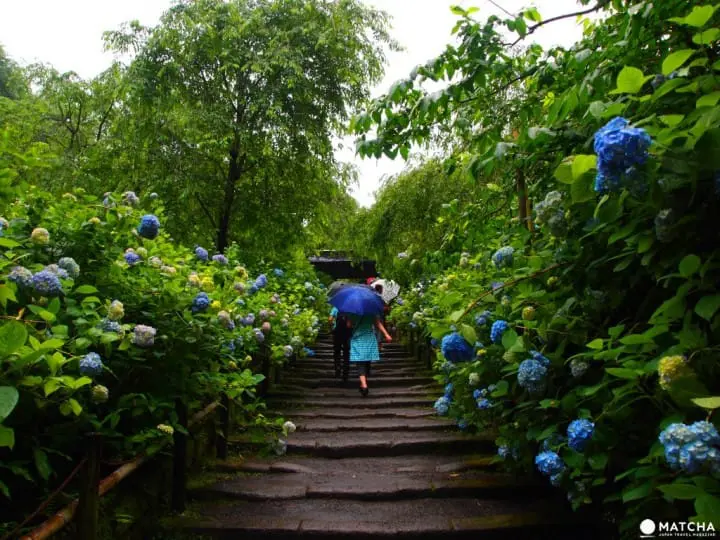
The answer is the rainy season. Hydrangea, ajisai in Japanese, means water vessel in Latin because it absorb water well. It is a rainy season flower, blooming between the beginning of June and the beginning of July in Japan.

The beauty of hydrangea is accentuated under the drizzling sky of the rainy season. Most people tend to stay inside on rainy days, but it's best to go to see hydrangeas when it rains.
Visit 'Ajisaidera' in Kamakura to See Japanese Hydrangeas
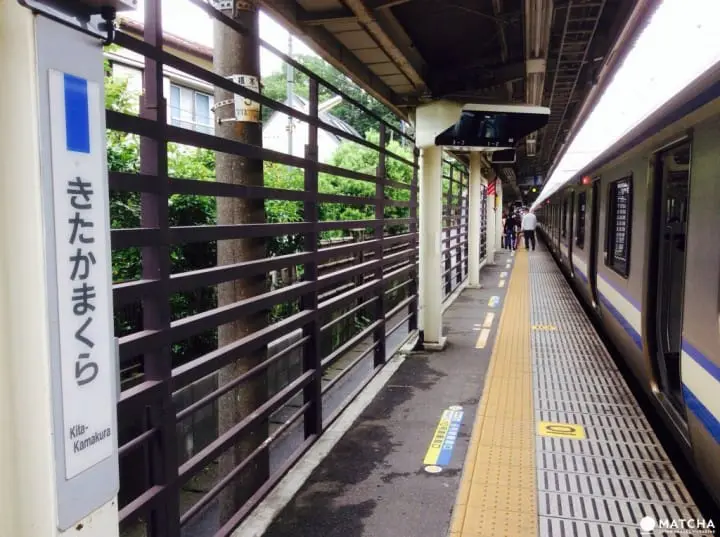
Kitakamakura and Kamakura Stations on the JR and Gokurakuji and Hase Stations of the Enoshima Electric Railway (Enoden) are all famous for their hydrangea tours.
Although the hydrangea is native to Japan, many western varieties have been bred overseas as well. At Meigetsuin Temple, which is known as Ajisaidera (the hydrangea temple), you can see 'Hime-ajisai', one of the very few ancient Japanese hydrangea species.
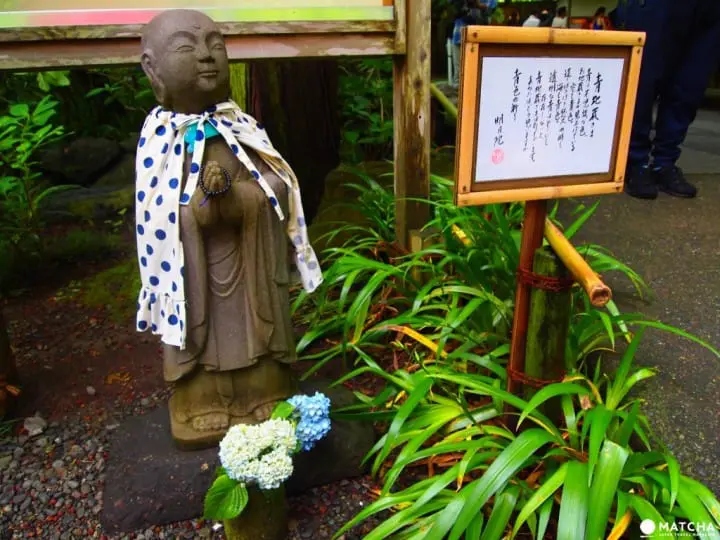
What’s mysterious about hydrangea is that the color of petals change depending on the pH (acid or alkaline) of the soil and the time elapsed after blooming. White flowers can turn blue, and blue flowers can turn deeper blue, violet or pink. Thus hydrangea is also called 'Shitihenge' (various changes) or 'Hassenka' (eight mountain hermits flower).
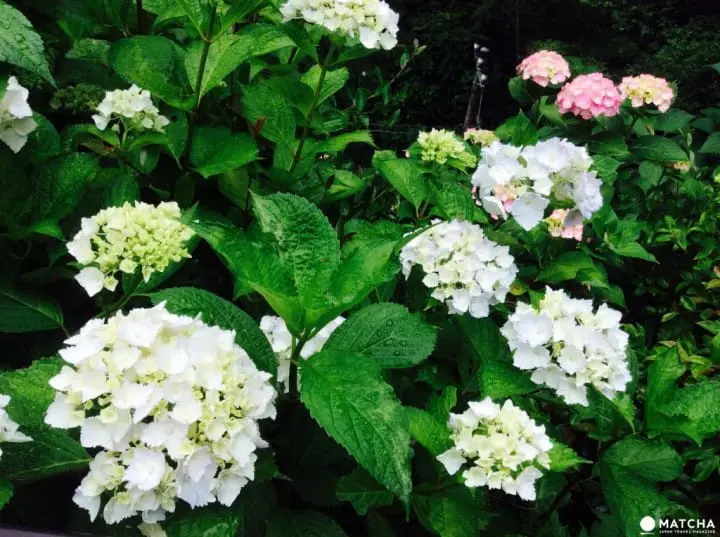

In the language of flowers, hydrangea means inconstancy, change of mind, pride, frigidity, and so on. Japanese people may have always overlapped their hopeless love and outrageousness in life on hydrangeas that change their color with environment in the rain.
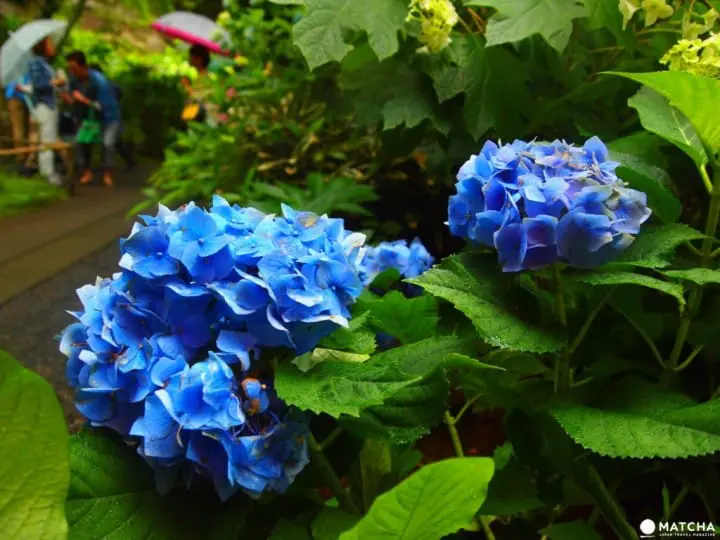
On the other hand, the small flowers gathered together evoke other meanings such as family bonds and enduring love. These meanings have recently attracted attention, and hydrangeas or hydrangea themed items have become popular as Mother’s Day presents.
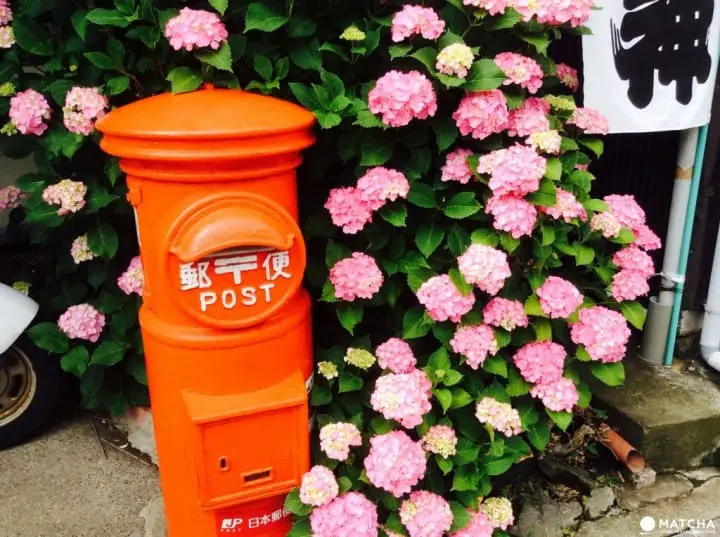
Which impression do you have of hydrangea?
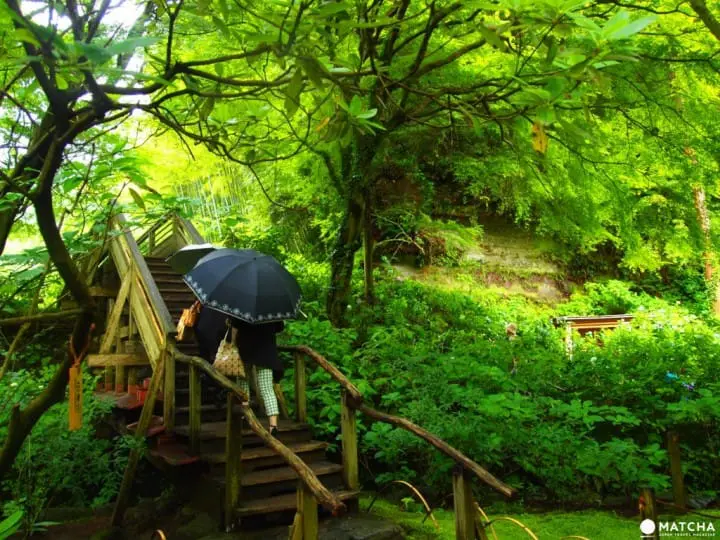
There is a sign at Ajisaidera.
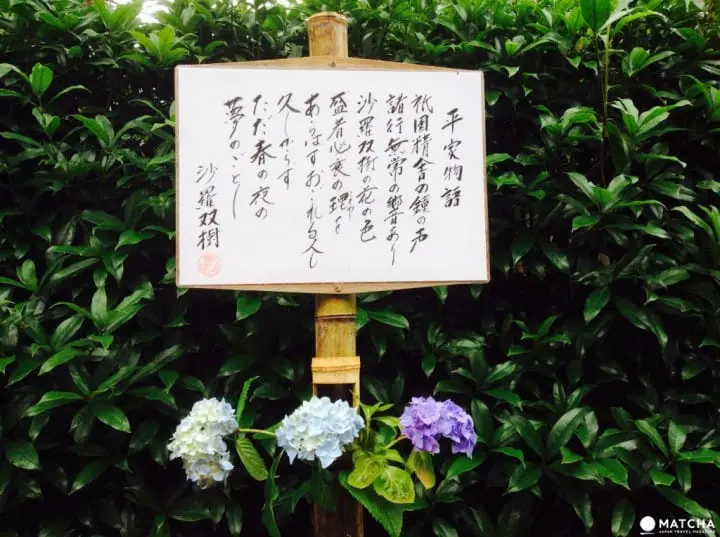
It reads: "The sound of the Gion Shoja bells echoes the impermanence of all things. The color of the Japanese stewartia flowers reveals the truth that the prosperous must decline".
Colorful and flashy flowers just wouldn’t fit in here. Hydrangea are not just a beautiful but the best flower to represent the sadness of impermanence.
Kamakura Colored by the June Rain
Besides Myogetsuin Temple, you can see hydrangeas here and there in Kamakura during the rainy season.
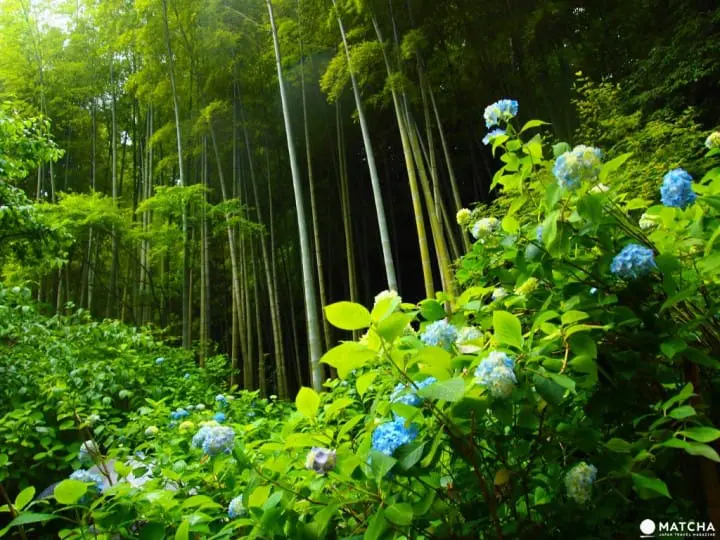
Surrounded by so many trees and bamboos that umbrellas are not necessary.
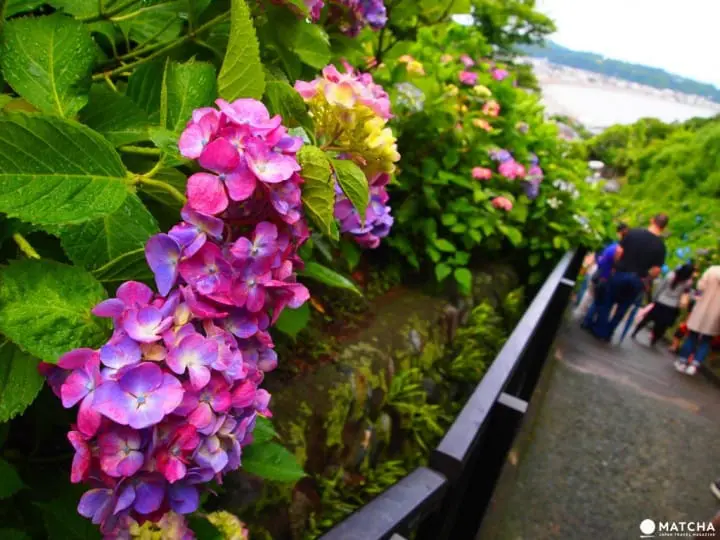
On a downhill with the view of Shonan coast.
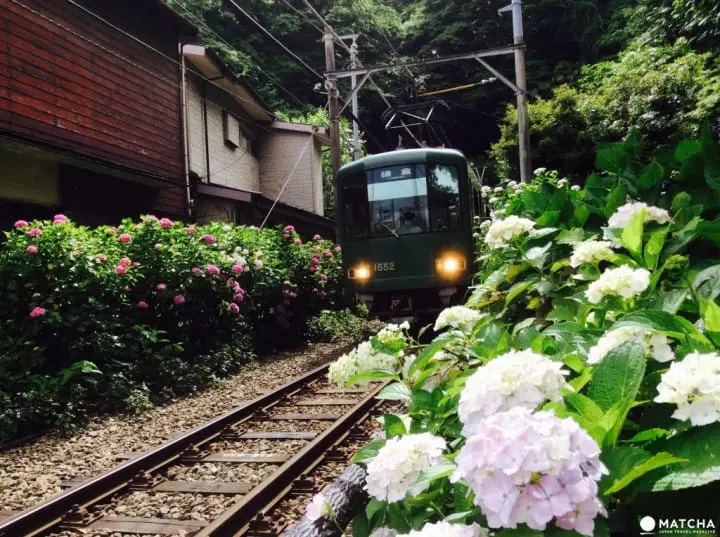
While watching the Enoden train intently with Toritetsu (*1), we found some hydrangeas just nearby.
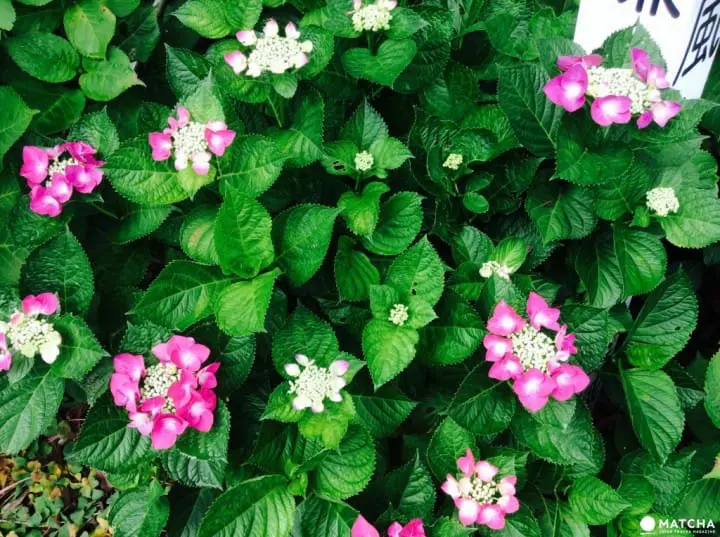
Swelling buds on an unnamed alley.
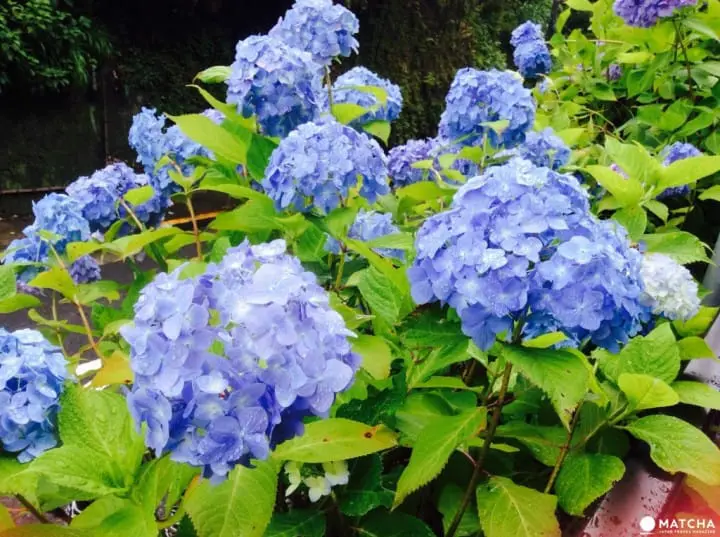
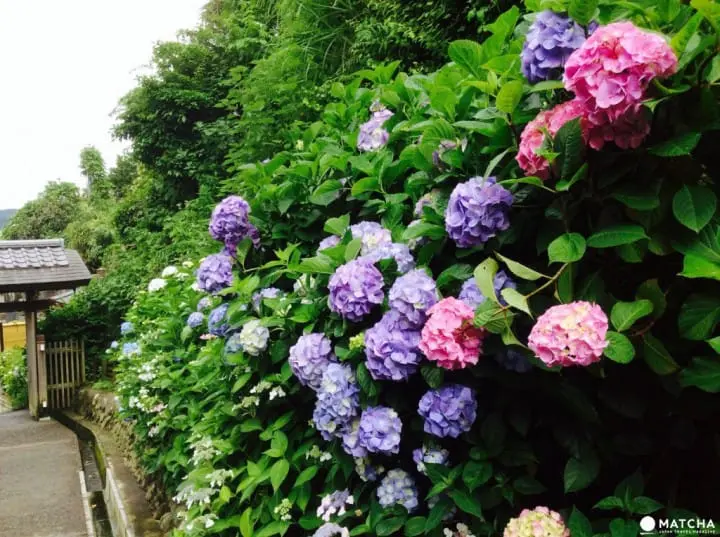
Blue, violet, pink and white - each pale color is pretty, but they look melancholy somehow with rain drops. It's almost romantic.
As of the beginning of June, when this article was written, the hydrangeas in Kamakura were in the stage of early half-bloom. You should go to Kamakura when it rains and enjoy the sight of these stunning, colorful blooms for yourself.
(*1) Toritetsu is a term referring to a kind of train-spotter, they are train fanatics who specialize in shooting pictures of trains. They can be seen at most train stations in Japan.
Information
Meigetsuin Temple (Ajisaidera)
Address: Kanagawa, Kamakura, Yamanouchi 189
Hours: 9:00-16:00
Closed: None
Wi-Fi: Not available
Language: Japanese
Nearest Station: Kitakamakura Station (JR Yokosuka line)
Access: 10 minute walk from JR Kitakamakura Station
Admission fee: 500 yen
Phone: 0467-24-3437
Website: Meigetsuin Temple
Jojuin Temple
Address: Kanagawa, Kamakura, Gokurakuji 1-1-5
Hours: 8:00-16:30 (inside the temple grounds only)
Closed: None
Wi-Fi: Not available
Language: Japanese
Nearest Station: Gokurakuji Station (Enoden)
Access: 5 minute walk from Gokurakuji Station
Admission fee: Free
Phone: 0467-22-3401
Religion: Shingon sect Kyoto Daikakuji Temple faction
Website:Jojuin Temple
Hasedera Temple
Address: Kanagawa, Kamakura, Hase 3-11-2
Hours: Summer (Mar-Sep) 8:00-17:00 (close 17:30), Winter (Oct-Feb) 8:00-16:30 (close 17:00)
Closed: None
Wi-Fi: Not available
Language: Japanese
Nearest Station: Hase Station (Enoden)
Access: 5 minute walk from Hase Station
Admission fee: 300 yen
Phone: 0467-22-6300
Religion: Jodo sect
Website:Hasedera Temple
This is the official account of MATCHA's editorial department. Our articles feature useful travel information for visitors to Japan, from how-to guides to recommended places to visit.


























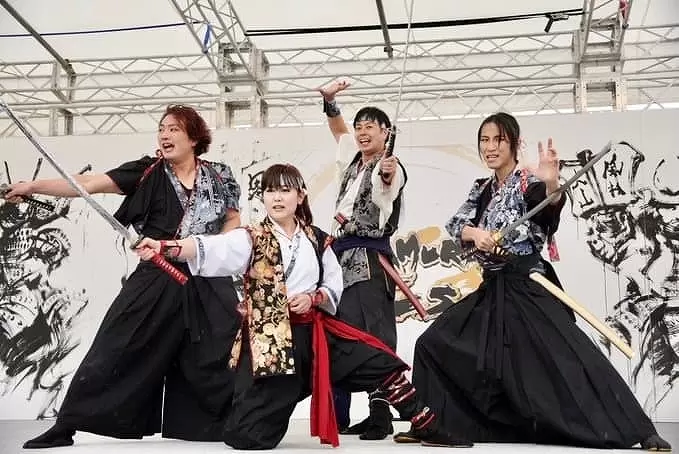
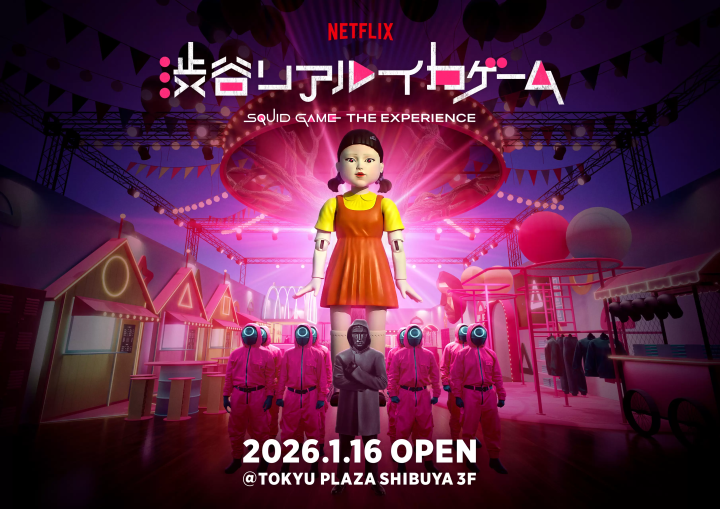








![[Close to Chubu Centrair International Airport] Tokoname's beloved "town milk"](https://resources.matcha-jp.com/resize/720x2000/2026/01/08-255159.webp)
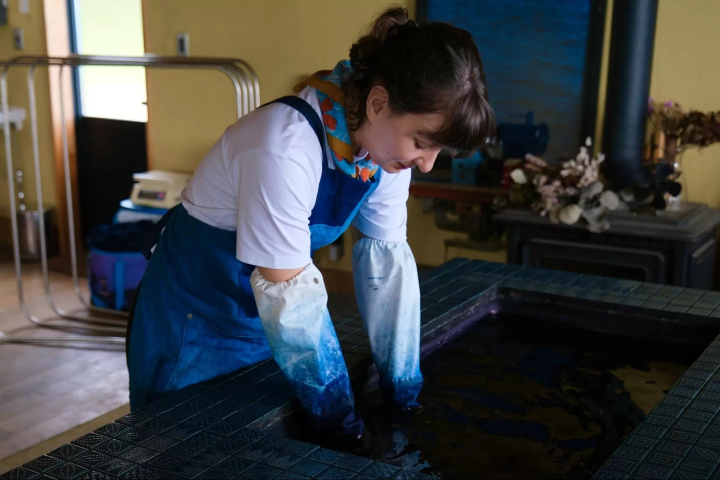


![[2026] Top 5 Strawberry Picking Spots in Tokushima, Naruto| Farms and Access Guide for January to May](https://resources.matcha-jp.com/resize/720x2000/2025/03/06-227165.webp)